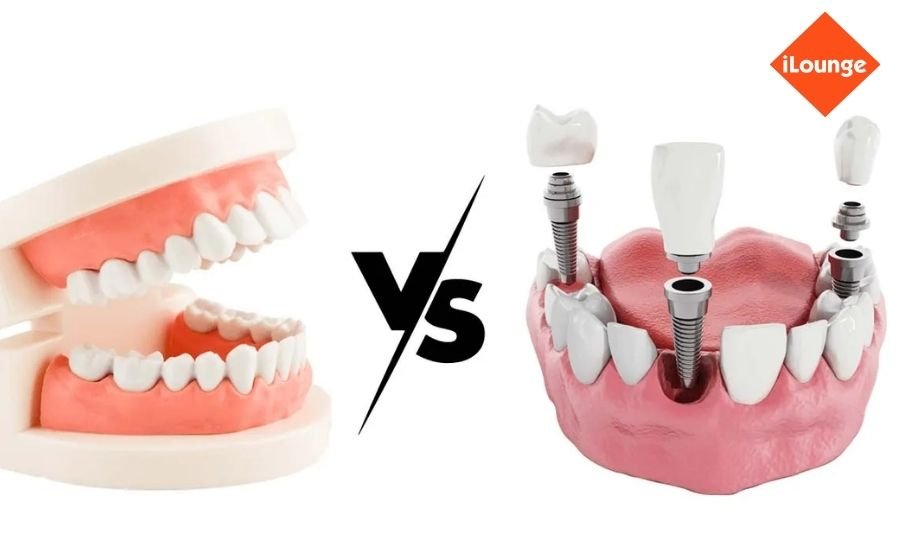Dental Implants Vs. Partial Dentures

Missing or damaged teeth can negatively affect your confidence, mouth structure, and ability to speak and chew. Teeth replacement options like dental implants or partial dentures help restore function and your smile. Discuss your options with an experienced dentist to pick a solution that is best for you. Here are the differences between implants and partial dentures:
Implants vs. Partial Dentures: At a Glance
| Dental Implants | Partial Dentures |
| Replaces a tooth down to the root | Sits on the gum |
| Long-lasting tooth replacement option | Lasts between 5 and 10 years |
| Permanent | Removable |
| Prevents jawbone loss | Does not prevent jawbone loss |
| Does not require frequent adjustments | Requires frequent adjustments |
Implants vs. Partial Dentures: An In-Depth Comparison
Implants comprise three units: a root, abutment, and crown. They are surgically implanted into your jawbone to replace missing teeth. Partial dentures consist of a gum-colored acrylic or nylon base for attaching the artificial teeth. They often attach to the surrounding teeth.
Installation Procedure
When installing dental implants, dentists administer anesthesia, and once you are under, they remove any remaining pieces of the tooth, including its roots. The socket is prepared by drilling a hole into your jawbone to install a titanium root. This root might take several weeks to fuse with the jawbone. Once it fully fuses with the bone, a dentist can install the abutment and crown.
Installing partial dentures involves extracting the damaged or decayed teeth (if necessary). After healing, dentists take impressions and wax bites of your mouth. They may provide temporary dentures to help you maintain your oral function. Dentists use the impressions and wax bites to custom-design your partial dentures. The final dentures are placed on your gums to replace the missing teeth.
Average Lifespan
Implants offer a long-term solution to missing teeth, lasting more than 30 years or a lifetime, especially when properly cared for. The root is permanent and acts like a natural root. The crown may need to be replaced after 15 to 20 years.
Most partial denture designs only last 5 to 10 years. After this, they might become loose and feel uncomfortable. Dentists often provide maintenance tips to help extend the life of your partial dentures.
Jawbone Loss
Many people prefer implants to guard against jawbone loss. The titanium root acts as a natural tooth root by stimulating the bone tissue as you chew. This stimulation causes the jawbone to grow, preventing bone resorption. Dentures do not stimulate the jawbone when chewing or biting food, potentially causing jawbone loss. Lack of stimulation often causes bone atrophy, which could affect facial structure. With time, you might notice sunken cheeks or facial wrinkles.
Adjustments and Replacements
Dental implants are permanent dental appliances that do not require frequent adjustments or replacements. Dentures often need to be adjusted or replaced frequently. New dentures accommodate jawbone resorption and receding gums, which make dentures loose and unreliable.
Restoring Smiles and Oral Function with Dental Implants
A missing or damaged tooth does not have to compromise your smile and mouth functions. Implants are often a preferred restoration option because they prevent bone loss and do not require frequent adjustments. Dentists review your oral health, jaw structure, and whether you need bone grafts before recommending implants. Contact an experienced dentist today to learn more about dental implants.
Stay Updated With ILounge

Mary Norrie is a dedicated content creator at ilounge.org, specializing in insightful and engaging articles across a range of topics. With a keen eye for detail and a passion for delivering high-quality information, Mary helps readers stay informed with the latest trends and updates





